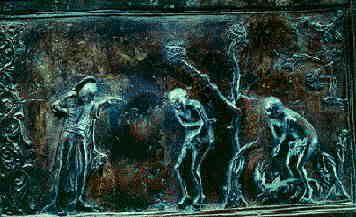For we without them cannot be made perfect; neither can they without us be made perfect.
— Doctrine & Covenants 128:18
Forty-one years ago — in the spring of 1967 — my friend Andrew Bos introduced me to the LDS Church by asking me to go to Mutual with him, then to Sunday School, and then to Sacrament meeting. After a few months of that, Andrew prodded me to ask my parents if I could have the missionary discussions. To my surprise, it was my father — a Navy man since age 17 who smoked Marlboros, drank martinis, inhaled coffee, and swore, well, like a sailor — who was enthusiastic about my doing so. He said that he could think of no other church that he’d rather have me join (we were all inactive Episcopalians) and that he thought the Mormon Church was “the one church that would save Christianity” (his exact words).
Having received a powerful testimony of the reality of the Restoration during the missionary discussions and my own study and prayer, I went back to my parents some weeks later to get permission to be baptized (I was only 14). Again, it was my father who signed the slip, saying that if he could ever give up his cigarettes, liquor and coffee, he’d join the LDS Church himself. He never won that battle, though — in fact, it was his earlier failed attempt in 1967 to give up smoking that led to my own decision never to start — and he died a little over 10 years ago. But through the years he and Mom were always supportive my Church involvement, including paying for my entire mission.
Yesterday, I was able to return the favor to my dad, doing his baptismal and initiatory work in the Denver Temple. In fact, my sweet wife Sandra and I together did that work for a total of 40 of my ancestors, the majority of them within four or five generations. That work included six relatives whom I knew personally — my dad, my uncle Jimmy, Grandma and Grandpa Webster, and Grandma and Grandpa Fickes (my mom’s adoptive parents) — as well as my mom’s birth father (Grandpa Wiren), most of my great-great-grandparents along all lines, and some even further back than that.
While the temple is a sacred place for me, I am not prone to having ‘thin veil’ experiences. That was different yesterday. At the start of my initiatory session, I organized the 22 male names I had by lineage going back. For example, the six Websters were done sequentially (uncle, father, grandfather, great-grandfather, great-great-grandfather, great-great-great-grandfather); I organized the other lines the same way, as far as possible. As I went through the round of initiatory work for each of these men, I felt a deep and increasing soberness at the literal nature of the authority being conferred and the blessings being unlocked; I also repeatedly felt love and gratitude from specific individuals as the work for them was done.
As importantly, I realized that by doing this work, I had opened the door for them to turn again and bring blessings into my life. Pres. Kimball famously said that when the Lord seeks to bless us or answer our prayers, He usually does so through other people. What struck me at the temple yesterday is that the “other people” aren’t limited to those of us on this side of the veil. By doing temple work, particularly for our close ancestors, we multiply those whom God can use to bless us.
There is another blessing, too. I was the only member of my family to join the LDS Church 41 years ago, and through that time I have remained the only member in my immediate family (meaning my own parents and siblings, as well as aunts, uncles, cousins, grandparents, and all my ancestors). Through all those decades, I have felt the responsibility of being the first in all my ancestral lines to be a member of the Church and to hold the Priesthood, of having to set an example while lacking one of my own to draw upon, and I’m well aware of how often I have fallen short.
Leaving the temple last night, however, I felt a weight had been lifted. I have company, now — others in my family and family lines who have embraced the Gospel and accepted its blessings. I no longer feel like such an odd duck — at least, not for that reason — and it’s nice to know I have patriarchs in my own line who now hold the Priesthood. I have a compelling reason to go to the temple frequently — we’ve got 38 names cleared for endowments (we did my Grandma & Grampa Webster in an endowment session last night), as well as lots of subsequent sealings. And I’ve got hundreds of more names to submit once we’ve gotten these done.
And that sounds just wonderful. ..bruce..
